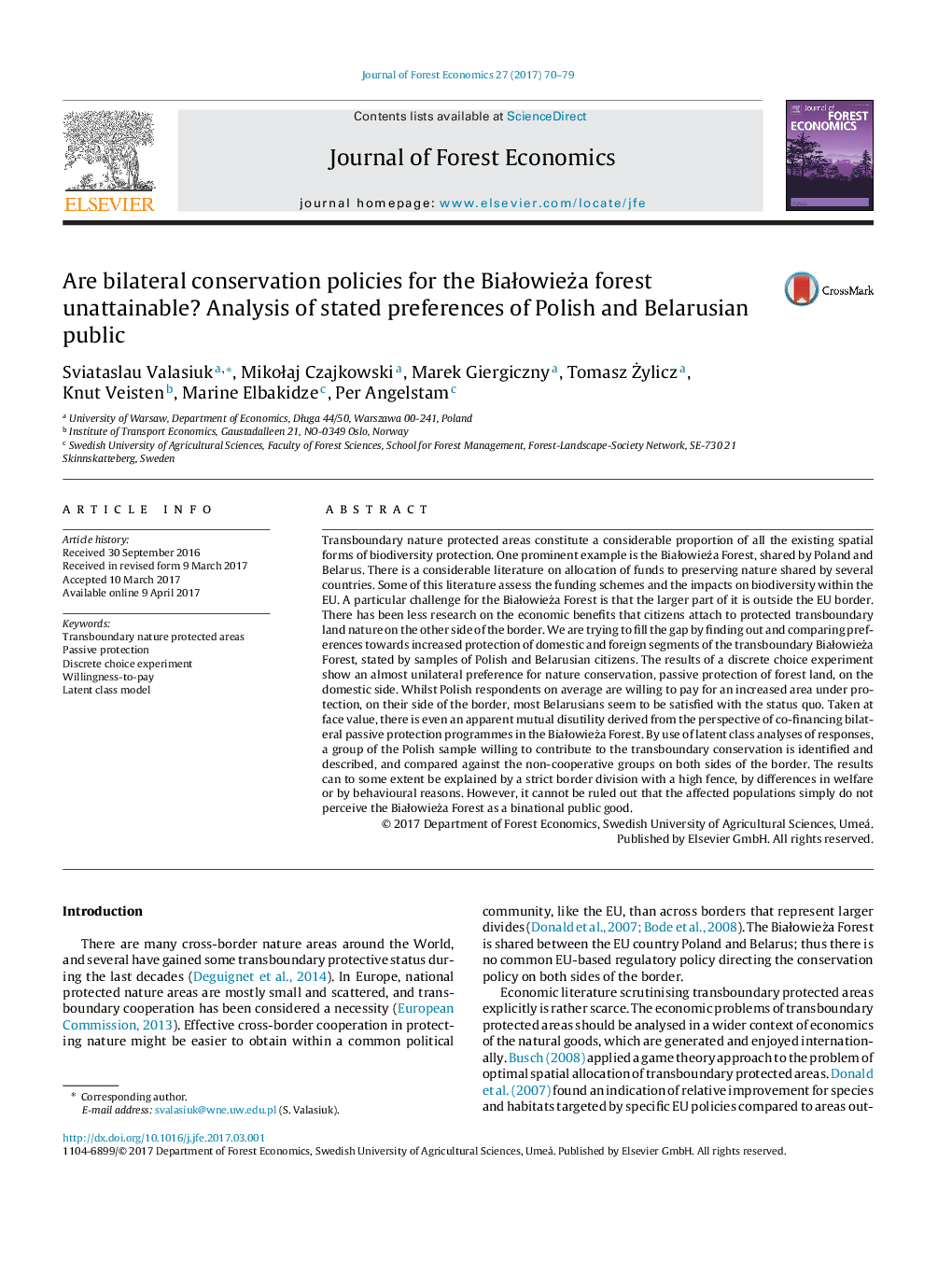| کد مقاله | کد نشریه | سال انتشار | مقاله انگلیسی | نسخه تمام متن |
|---|---|---|---|---|
| 6459910 | 1421739 | 2017 | 10 صفحه PDF | دانلود رایگان |
Transboundary nature protected areas constitute a considerable proportion of all the existing spatial forms of biodiversity protection. One prominent example is the BiaÅowieża Forest, shared by Poland and Belarus. There is a considerable literature on allocation of funds to preserving nature shared by several countries. Some of this literature assess the funding schemes and the impacts on biodiversity within the EU. A particular challenge for the BiaÅowieża Forest is that the larger part of it is outside the EU border. There has been less research on the economic benefits that citizens attach to protected transboundary land nature on the other side of the border. We are trying to fill the gap by finding out and comparing preferences towards increased protection of domestic and foreign segments of the transboundary BiaÅowieża Forest, stated by samples of Polish and Belarusian citizens. The results of a discrete choice experiment show an almost unilateral preference for nature conservation, passive protection of forest land, on the domestic side. Whilst Polish respondents on average are willing to pay for an increased area under protection, on their side of the border, most Belarusians seem to be satisfied with the status quo. Taken at face value, there is even an apparent mutual disutility derived from the perspective of co-financing bilateral passive protection programmes in the BiaÅowieża Forest. By use of latent class analyses of responses, a group of the Polish sample willing to contribute to the transboundary conservation is identified and described, and compared against the non-cooperative groups on both sides of the border. The results can to some extent be explained by a strict border division with a high fence, by differences in welfare or by behavioural reasons. However, it cannot be ruled out that the affected populations simply do not perceive the BiaÅowieża Forest as a binational public good.
Journal: Journal of Forest Economics - Volume 27, April 2017, Pages 70-79
